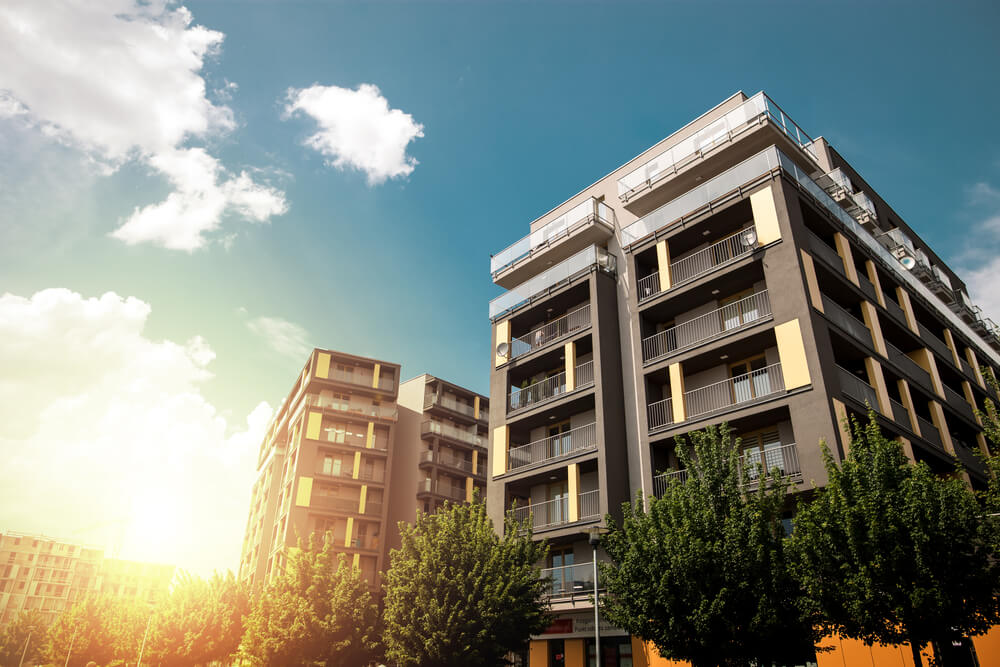
Strata or apartment living is the fastest-growing form of property ownership in Australia. In fact, almost half of all homes built today are units.[1]
Apartment buildings have popped up around the country at record rates, due to increasing demand for inner city living spaces. The number of occupied apartments (including flats and units) in Australia increased by a whopping 78% in the last 25 years, according to the latest Census data.[2]
The downside of the strata property boom is the spike in property defects in recent years due to contractors cutting corners and compromising on quality to meet rising demand.
So, if you’re an apartment owner in a residential building administered by body corporate, there’s a chance you may encounter defects with common property or your private lot.
A comprehensive study of strata properties in NSW found that defaults plagued 85% of new units built since 2000.[3]
Perhaps the most recent and poignant defect example in the country, is the Sydney’s Opal Tower debacle when 300 residents were forced to evacuate their homes on Christmas Eve last year due to cracking in the walls of the building, while the tower’s builder and developer deflected the blame.
It has since raised serious questions about what statutory protections are in place for apartment owners and what their rights are, in the event an individual unit or building is deemed defective or unsafe.
Property defects can result from defective designs, faulty workmanship, dodgy materials, or failure to comply with the structural performance requirements of the National Construction Code of Australia.
The most common defects reported in new apartment blocks include issues with water penetration, cracking in walls, guttering faults, tiling problems, defective roofs, or plumbing and cracked balcony balustrades, according to a study by the University of New South Wales.[4]
So, where do you stand as an apartment owner if defects are discovered in your building? We give you a general overview of what protections are in place and what your responsibilities are.
Who is responsible for fixing defects in an apartment building?
According to a national survey into apartment living conducted by Griffith University Queensland, the top concerns for unit owners are building defects and problems with constructions.[5]
This is because the responsibility of fixing defects in common areas like foyers, lifts, swimming pools, carparks and fences, for example, usually falls with the owners’ corporation for common property (body corporate).[6]
The first avenue to repair defaults in the building is to seek rectification with the builder directly, within six months of noticing the defects. However, the body corporate may have to foot the initial repair bill under its contractual obligations, as some defects could render the building uninhabitable or worse, cause it to collapse.
The body corporate as a collective can opt to pursue legal action (if the building is not more than 10 years old) if the builder or developer is not forthcoming in remediating defects or rectifying shoddy work, as they may be in breach of the National Construction Code.[7]
If any defects are found inside private lots (i.e. walls, floors etc.), unit owners alone should seek reparation with the builder or developer. If this fails, the body corporate can seek a rectification order, by filing a building complaint with the appropriate body.[8]
Residential strata insurance
Apartment owners are also protected by their strata insurance, which is compulsory in most states, for certain defects and damages in shared areas. They share premium costs of strata insurance as part of their strata fees and liabilities.[9]
Defects and damages known by the body corporate resulting from original building defects are not covered by strata insurance, and if a personal injury or accident occurred as a result of this, the body corporate would be liable. The body corporate is required to disclose any defects when applying for strata insurance under duty of disclosure rules.
Strata insurance will typically pay out claims for repairs of any damage caused by unknown defects, but not to have the defect itself fixed.[10] Again, this responsibility lies with the builder.
Strata insurance ends at the threshold of your front door. However, apartment owners can protect their internal fixtures, interior walls and valuables inside their unit with contents insurance. If you’re living in an apartment and want to make sure your belongings are covered, you might find contents insurance for you and your budget with our free comparison tool.
Statutory and builder’s warranty insurance
All residential building contracts also contain statutory warranties under their domestic building legislation. If defects are found, unit owners can lodge a claim for breach of statutory warranty with their state’s building and construction regulator who may order the builder to fix the problem, pay damages or may impose a hefty fine and in some cases revoke their building license.[11]
For major building defects that make a building uninhabitable or could cause a collapse, the warranty period is six years from when the building was completed and two years for minor defaults.
If the builder can’t be found either because of bankruptcy, disappearance or death, unit owners can seek compensation and make a claim through home warranty insurance that should have been taken out prior to the commencement of construction.
It’s a legal requirement under state laws, except Tasmania (as of February 2019) that residential buildings are covered under a home or builder’s warranty insurance which protects buyers and owners against incomplete or defective building work, loss of deposit or failure to complete the job.[12]
Home builders and renovators are required to take out complying home warranty insurance for contracts over $12,000 (this figure is $3,300 in QLD) underwritten by the state, which means that if you make a claim you, it will be paid out by the government.[13]
Premiums are generally paid by a licenced builder and proof of insurance must be submitted to the local council before the development or building application is approved. The statutory warranty period in most states is six years.[14]
What to do if there are defects in your apartment?
If you notice structural defects, or any other kind of defects in your private lot, your first point of contact should be the body corporate. You may find out other owners have reported similar or noticed similar problems which gives you greater legal standing as a collective group.
Secondly, you should notify the builder as soon the defect is noticed and seek remedy directly from them. You may need to provide photographs and proof of ownership before your complaint goes through the appropriate channels. Keep copies of all written correspondence.
If the builder is not compliant or the issue cannot be resolved, you can also file a complaint with your state’s building and construction regulator who can, in some circumstances, order the builder to remedy the defect or pay compensation.
Sources
[1] Commsec- Australian home size hits 22-year low (2018).
[2] Australian Bureau of Statistics- Apartment living (2017).
[3] The Sydney Morning Herald- Most new strata-title properties have defects (2012).
[4] Above Board Building and Pest Inspections- 10 most common problems with new build apartments (2018).
[5] Unit Owners Association QLD- Defects: biggest concern for apartment owners (2015).
[6] Teys Lawyers- The strata guide to rectifying apartment building defects (2010).
[7] Carroll and O’Dea Lawyers- Protection for your home: critical time periods for building defects (2016).
[8] Queensland Building and Construction Commission- Building complaints (2018).
[9] Insurance Council of Australia- Strata insurance (2018).
[10] Whitbread- No double dipping on property defect claims (2015).
[11] Makinson d’Apice Lawyers- Defects FAQs (2015).
[12] QBE- How builders warranty works (2015).
[13] Planned Cover- Builders Warranty Insurance (2018).
[14] QBE- How builders warranty works (2015).









